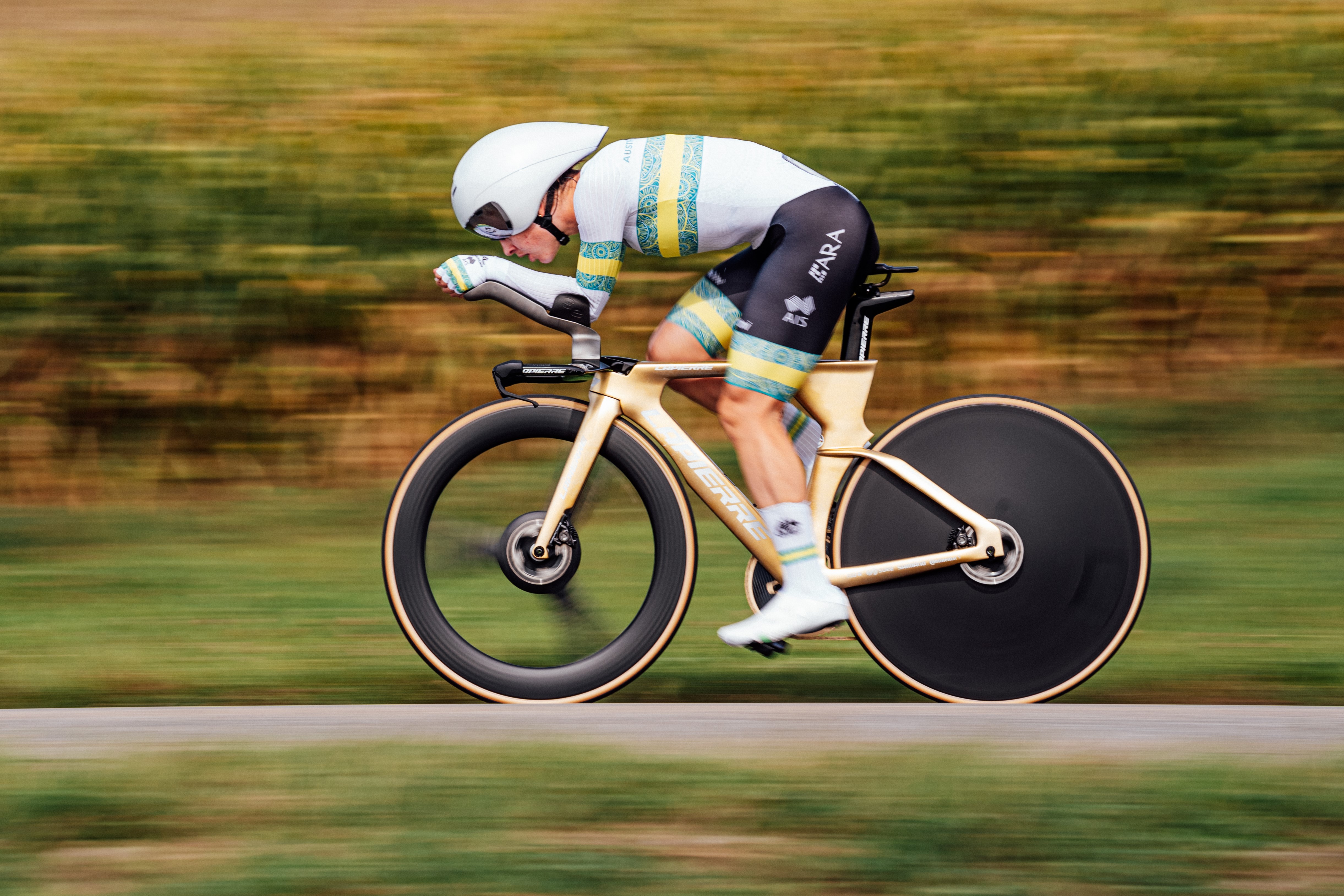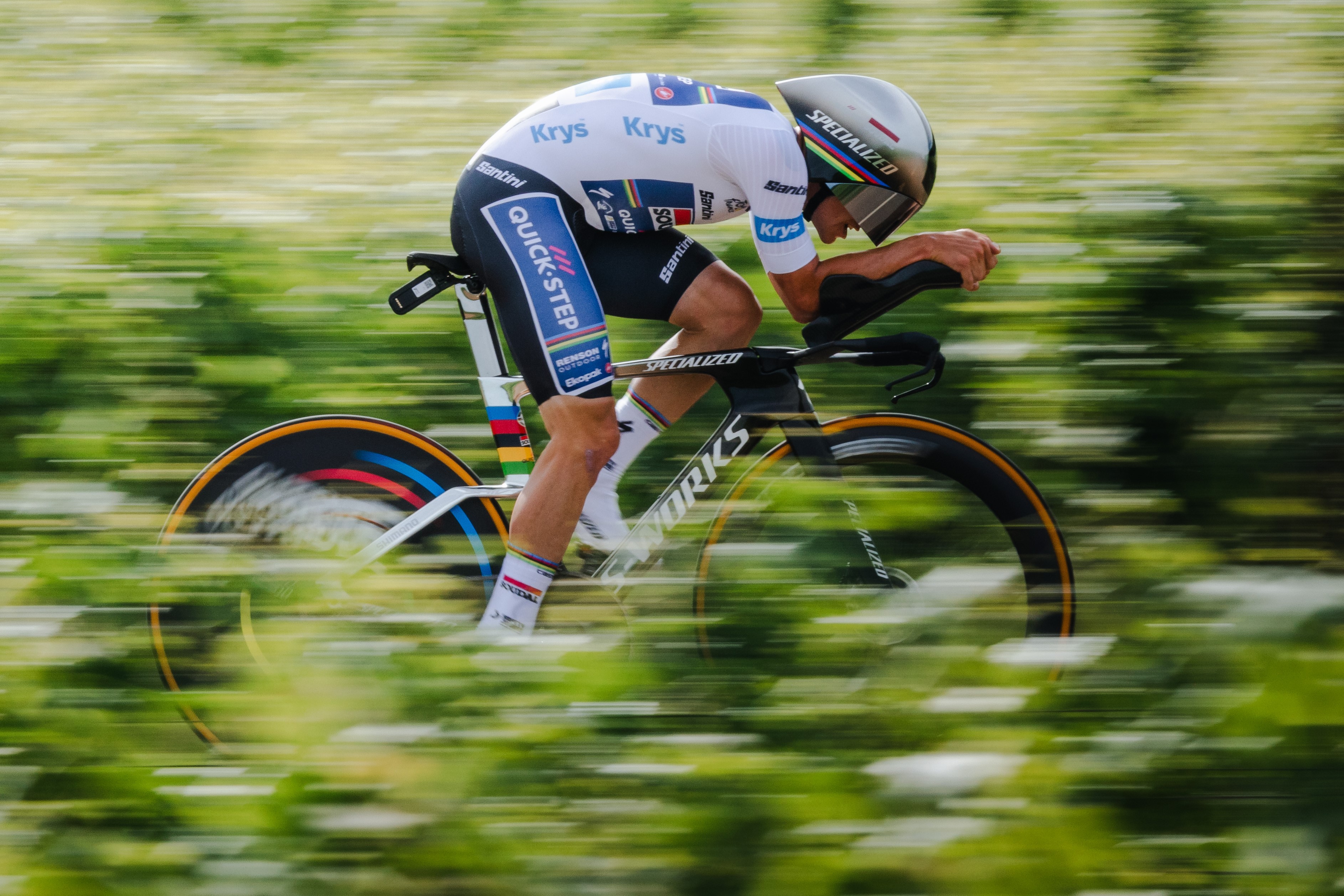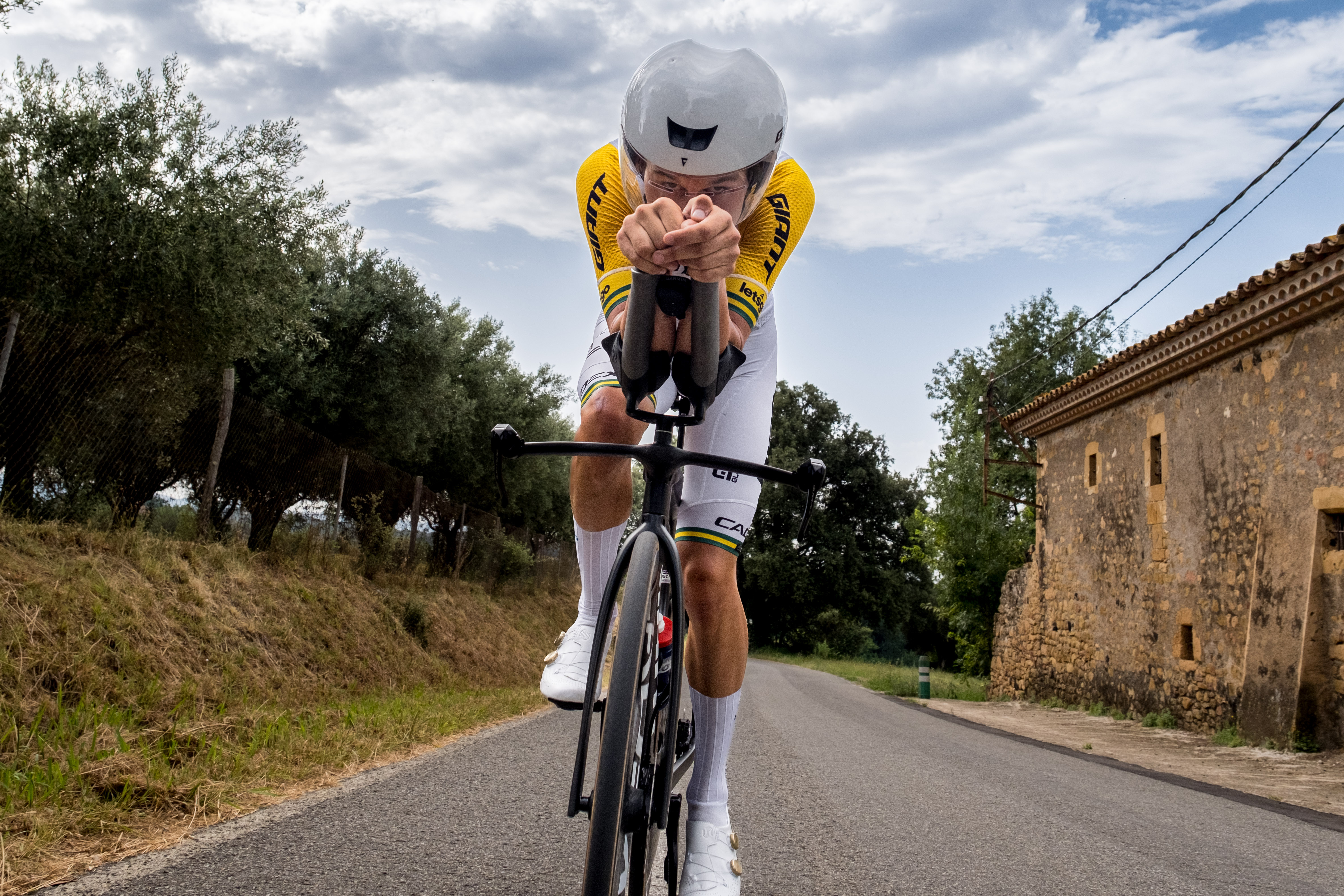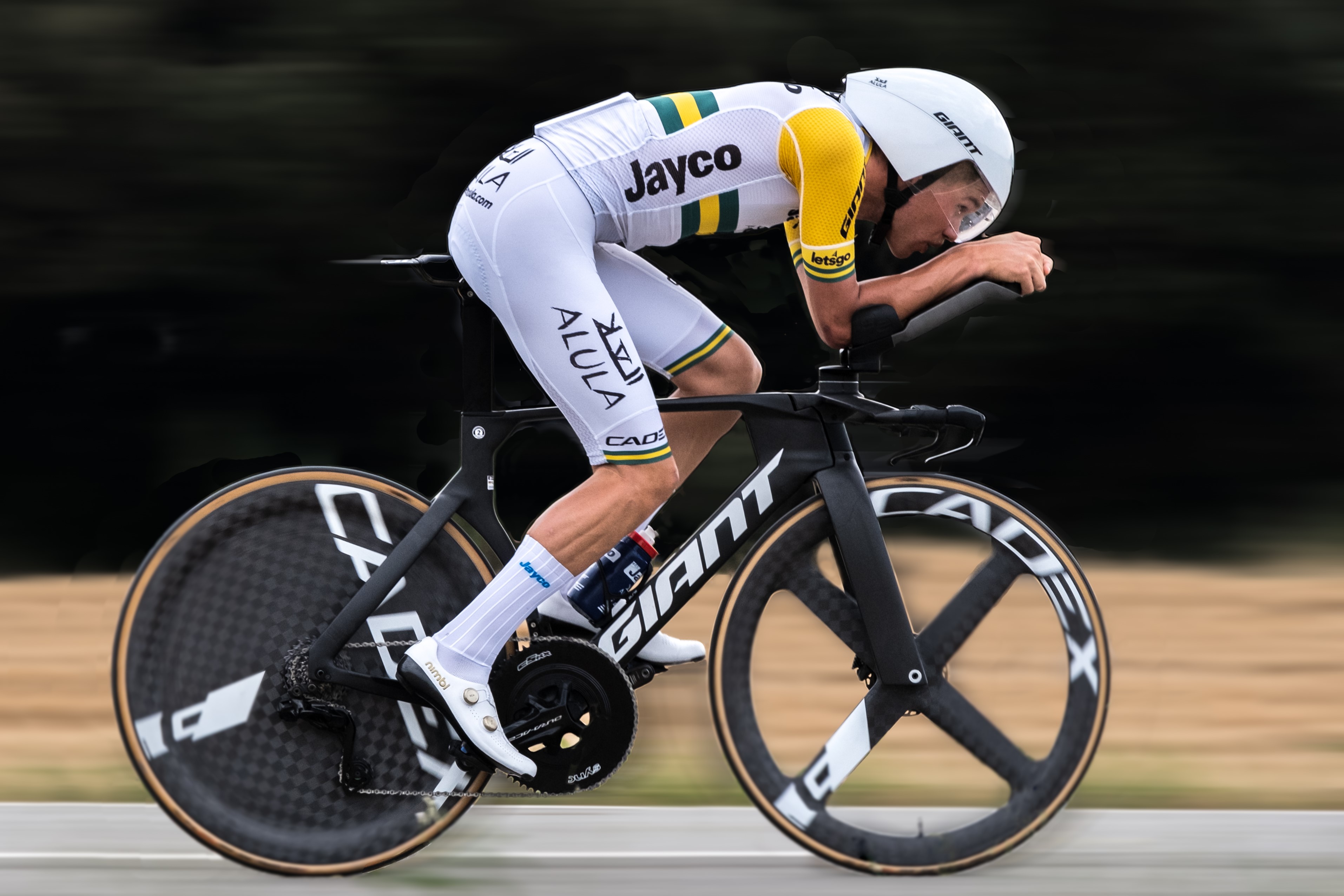Aero Talent
Posted by Joe Laverick on 19th Nov 2024
Can some athletes naturally get more aerodynamic than others? Is there a secret trick? A silver bullet to achieving optimal aero performance? In a recent Performance Process podcast with the Escape Collective, Ken Ballhause of Sync Ergonomics and John Pitman, Head of Aerodynamics at the Australian Centre for Sports Aerodynamics sat down for a chat with Ronan Mc Laughlin. John is a highly-accomplished aerodynamicist, with experience spanning the iconic Team Sky, AUS Cycling, various private consultancy, and now, head of aero at the Australian Centre for Sports Aerodynamics. In this conversation, John coined the term ‘aero talent’ and this sparked some further interest.

‘Aero talent’ as a theory intrigues me. I’ve always asked myself why some people are better than others. Is it nature, or nurture? Climbers often look awful in TT position, is that because they don’t train on the bike, or is there something else going on?
I grew up on the British TT scene. I didn’t realise it at the time, but I spent my early teenage years learning the art of testing. Where to push, where to maintain energy, when not to pedal. Positional discipline, time in the position - the list goes on. I always knew that I naturally fitted a TT bike better than some of my competitors, but there’s much more to it than that.
Aero Talent
“The ability for someone to naturally "fall into" close to an optimal TT position, with very little input and coaching.” This is the perspective of Ken Ballhause, owner of Sync Ergonomics.
Case Study
There’s no better case study to this than the final stage of the 2017 Giro d’Italia. Nairo Quintana was sitting in pink 0:39 ahead of second place Vincenzo Nibali. Most importantly, Tom Dumoulin, the TT behemoth of his generation, was just 0:53 back from winning his first Grand Tour. The course, a pan flat 29km around Milan. Game on.
“Your inherent morphology gives you a set of limb and torso dimensions that make it easier or otherwise to put someone in a position that has relatively low drag straight away. Then your strength and flexibility are enablers around that and what is achievable.” - John Pitman
Pitman’s idea is relatively simple in theory, some humans are better fitted to a TT position, but that’s only half of the puzzle, from there an athlete has to work to make themselves efficient. If we look at our example from the 2017 Giro, there is no doubting that the long-limbed 185cm Dumoulin is the perfect fit for a TT bike, but I’d bet my last dollar that he spent more time working on it than Quintana too.
Throughout his time as a high-level GC rider, Nairo Quintana’s kryptonite was the test against the clock. Time and time again, he would find himself at the pointy end of a General Classification fight, only to come undone in TTs. A traditional climber, it’s widely regarded that he didn’t care too much about his position, something we cannot wrap our heads around. However, on top of this, his "inherent morphology” was working against him.
The long and short of it, Dumoulin put 1:24 into Quintana that day, and walked away with the pink jersey, the biggest win of his career. In total, Quintana lost over four minutes to Dumoulin in the Giro d’Italia, but he finished second overall by a mere 31-seconds. Yes, Quintana doesn’t have a natural ‘aero talent’, but we are willing to bet that with a lot of extra time spent working on his TT skills, he would’ve won that Grand Tour.
Nature versus Nurture?

There are multiple elements to ‘aero talent’: athlete morphology, athlete flexibility and physical condition, equipment choice (saddle and cockpit), bike fit (configuration of equipment), skills work, and prior experience.
A large part of "aero talent" is learning what being in a TT position means. Having the ability to visualise the position and have the innate connection with your torso position, head and arm position, that is critical.
“I look at my kids, they are 4.5 years old, they idolise Luke Plapp, Remco Evenepol, Grace Brown, Georgia Baker. Without ever riding a TT bike, they know exactly what an optimised TT position looks like, though seeing those athletes perform. They regularly pretend they are riding a TT bike and show off their "Luke Plapp" and "Grace Brown" TT positions, with their hands up, their head down, face close to forearms and their shoulders narrow.
On the flip side, I have worked with endless athletes that are starting their adventures in the discipline of TT (or Tri) and they have absolutely no idea what a quality TT position looks like. Cycling is generally a sport that a lot of people can do, as success is less "technique" driven. For example, if you can't swim, you sink and learn pretty quickly the importance of technique. Cycling is different, you can have horrible technique and still move forward.
To be a good time triallist, well that requires skill. It requires aero talent, innate, or learned over time and with coaching.
This is where equipment choice and bike fit come into the equation, these are strategies that can facilitate the escalation of someone's aero position. I have been doing this long enough to know that equipment alone will not make someone as aero as possible, but it can help a lot. - Ken Ballhause
The World Tour Opinion

Luke Plapp is a multiple-time Australian National TT Champion, and is widely regarded as one of the best time-trialists in the world. Having worked with Sync since 2018, we asked ‘Plappy’ his opinion on aero-talent.
“Unfortunately I think ‘aero talent’ also comes down to your genetics. Some people are able to get into positions within the UCI category that suits them better than others. Personally, we’ve developed an amazing position and tested a whole range of others. We’ve never been able to find something that’s groundbreaking. You only have to look at Dan Bigham or Remco to see there’s a giftedness there.
Short legs and a longer torso is key to a low CdA. That being said, it’s the discipline too. Some people treat it like an art, focus, and train for it. You’re not necessarily gifted and you can work on it. My position is comfortable, and not too extreme. I think there’s a lot to say for the art too: training on rollers, time on the bike. It is still trainable.”
A Modifiable Gift?
Like anything, aero performance is something that can be coached, trained and improved over time. It's not helpful for an athlete to think that it is only genetics and that they can't improve at the time trial discipline. This takes, time, effort and energy and needs to be layered within a training plan, for full success.
Time on the TT bike, in the real world is important and masively under appreciated. On a TT bike, what you need to train is your awareness and control of the movement of the bike under you. Having the intate ability to correct this movement (control), without breaking your TT position, is another example of aero tallent, with a significant contribution to performance.
“Technique work is hugely relevant in TT performance. I have a few examples where in aero testing, we had an accomplished athlete who in a round of testing was not able to hit their previous level of performance (outright CdA and consistency). Two weeks of skills work on rollers was what it took to establish their expected performance.
Skills work is worth more than any single piece of equipment, even for very accomplished athletes. I think that if you are an elite athlete, not doing skills work for 2-4 weeks leading into a targeted competition, you are absolutely not achieving your best aero performance. Even the most talented of athletes can be "sharpened". - Ken Ballhause

So, aero talent. There is nature to it, but there’s nurture too. It’s the age old story: hard work beats talent when talent doesn’t work hard.

